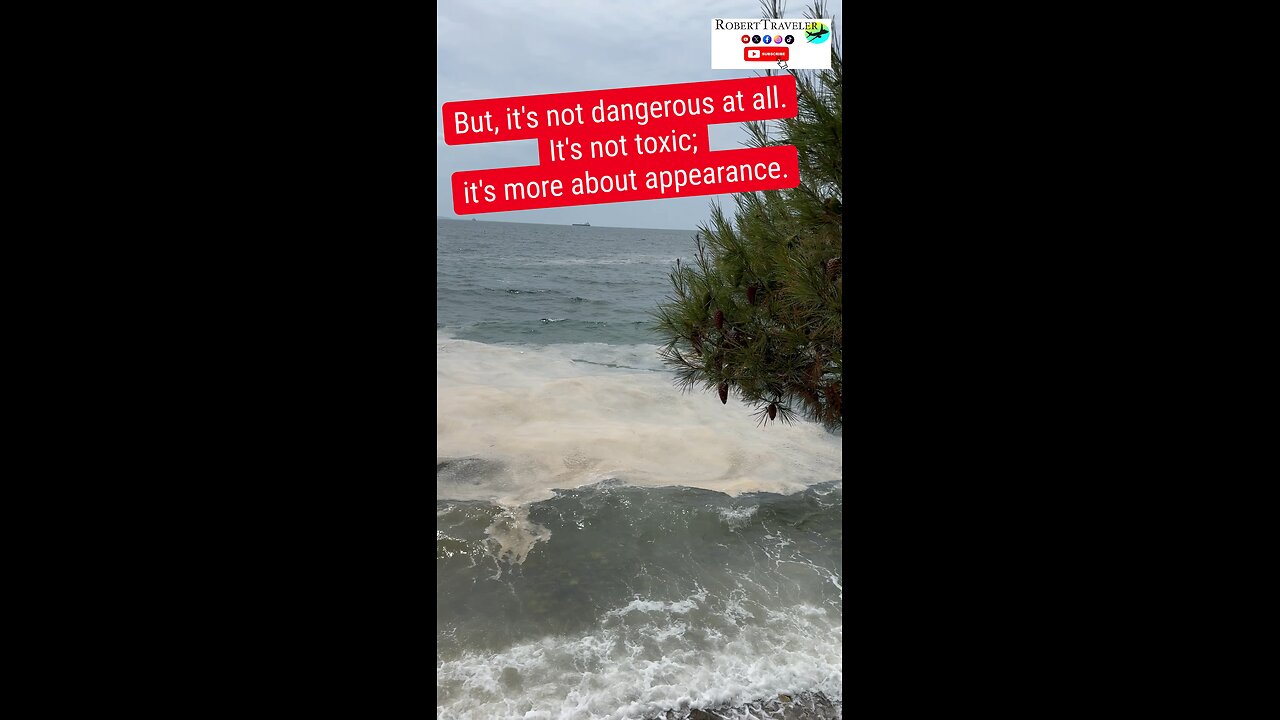Premium Only Content

But, it's not dangerous at all. It's not toxic; it's more about appearance.
But, it's not dangerous at all. It's not toxic; it's more about appearance.
Biologist explains what slime on the sea surface is. The slimy substance is formed by polysaccharides that change their aggregate state, transitioning from dissolved to solid. These sugars then aggregate into clusters, forming slimy aggregates of various sizes.
If the clusters are less dense than water, they rise to the sea surface and accumulate in coves where currents carry them. This is primarily problematic for organisms on the seafloor.
Although less noticeable, the issue becomes more severe if the slime aggregates are denser than water. In this case, they accumulate on the seafloor, covering it. Because slime is essentially sugar, a nutrient, bacteria decompose it, consuming oxygen in the process. This reduces oxygen exchange at the seafloor, exacerbating oxygen depletion due to decomposing bacteria.
Slime on the sea surface often disappears after the first storms, as air circulates more rapidly and intensively, breaking up the slime from the sea surface. However, the duration of sliming on the seafloor is much harder to define, as "these mechanisms are still so poorly understood that while the rough picture is clear, knowing how much, what, why - not," he concluded.
At first glance, the phenomenon may seem quite intimidating, but biologists argue that it is a natural phenomenon known as sea bloom. If you were alarmed by the sight of slime, rest assured that there is nothing to worry about.
No, it's not dangerous at all. While it may not be pleasant to look at, and the feeling when it touches your skin isn't pleasant either, it's not toxic; it's more about appearance.
-
 2:20:30
2:20:30
The Dilley Show
6 hours ago $19.11 earnedRoger Stone in Studio plus Q&A Friday! w/Author Brenden Dilley 12/27/2024
43.9K2 -
 1:57:02
1:57:02
The Charlie Kirk Show
4 hours agoThe Great H-1B Battle + AMA | Lomez | 12.27.24
96.1K89 -
 11:39
11:39
Russell Brand
1 day agoWhat You're Not Being Told About The Syrian War
128K211 -
 DVR
DVR
Bannons War Room
1 year agoWarRoom Live
101M -
 1:49:21
1:49:21
Film Threat
7 hours agoBEST AND WORST OF 2024 + SQUID GAME SEASON 2 | Film Threat Livecast
41K5 -
 1:06:04
1:06:04
The Big Mig™
21 hours agoGlobal Finance Forum Powered By Genesis Gold Group
39.4K2 -
 34:38
34:38
Tudor Dixon
5 hours agoThe Changing Landscape Between Tech and Politics with Mike Benz | The Tudor Dixon Podcast
30K3 -
 2:23:58
2:23:58
Matt Kohrs
16 hours agoRumble's Stock Is EXPLODING!!! || The MK Show
86K7 -
 1:57:47
1:57:47
LFA TV
19 hours agoBOMBSHELL FINAL REPORT: BIDEN ADMIN SUPPRESSED WUHAN LAB LEAK | LIVE FROM AMERICA 12.27.24 11am EST
48.6K6 -
 43:07
43:07
Grant Stinchfield
5 hours ago $7.38 earnedWe Built it... China Controls it... Trump Will Take it Back!
26.1K9